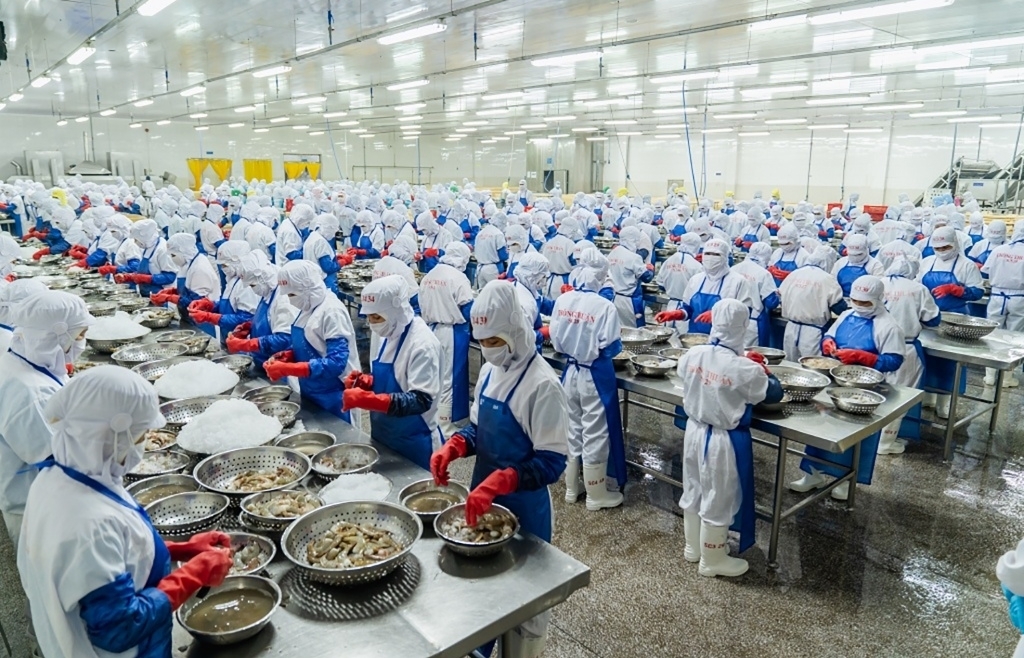Businesses have more options for incentives with RCEP
| RCEP agreement to take effect in January 2022 | |
| Vietnam set to ratify RCEP by November | |
| Japan becomes third country to ratify RCEP agreement |
 |
| Mr. Tran Thanh Hai |
How do you evaluate the effectiveness of exploiting the two most popular new generation FTAs that Vietnam participates in, the Comprehensive and Progressive Agreement for Trans-Pacific Partnership (CPTPP) and the Vietnam FTA- EU (EVFTA), especially in 2021?
With the CPTPP market, export growth has been quite impressive. The CPTPP region, especially countries like Canada, Mexico, and Peru, are relatively new export markets, and Vietnam's exports are still modest.
After signing the CPTPP, Vietnam's exports to these markets increased significantly. For example, exports to Canada in 2021 grew by 78%, Mexico by 44%, Peru by 79%. In addition, in other markets such as Chile, Brazil and Argentina export growth is also very high.
With the EVFTA, the export of Vietnamese goods to a number of markets has increased significantly, for example, Belgium increased by 58%, Italy increased by 22%, Portugal increased by 49%.
Even small markets such as Greece or the Czech Republic. In major markets in the bloc such as Germany and France, export growth is also maintained.
In addition to enterprises enjoying tariffs when implementing the EVFTA, it is even more important to have sustainable incentives. Previously, enterprises exporting to the EU market mainly relied on the GSP mechanism (universal preferential system). This is the EU's unilateral preferential mechanism for Vietnam. That mechanism to a certain point may be lost when Vietnam's economy develops. However, with the EVFTA, the incentives are fundamental between Vietnam and the EU, and at the same time the incentives increase over time.
It can be said that Vietnamese enterprises have gradually grasped and made good use of opportunities from new generation FTAs.
With the RCEP agreement, Vietnamese enterprises also have more choices about the level of incentives, especially when enterprises reform their production processes to meet the rules of origin. For example, enterprises export to Japan, besides the Vietnam-Japan FTA and the ASEAN-Japan FTA, enterprises have the option of RCEP to meet the rules of origin.
In addition, with the RCEP agreement, the ability to accumulate raw materials is also greater. Enterprises can import raw materials from China, but exporting products to markets such as Australia, New Zealand still enjoy preferential treatment from RCEP. In the FTAs between ASEAN and each partner country, there is no such thing. This is a direction for businesses to take advantage of in the near future.
Some people think that, in addition to the EVFTA or CPTPP, the RCEP officially taking effect from January 1, 2022 also opens up many opportunities to promote exports for Vietnam in 2022. What is your view?
The members participating in the RCEP agreement basically have FTAs with Vietnam and with ASEAN. In addition to ASEAN, the remaining five partner countries participating in RCEP all have FTAs with ASEAN in general, including Vietnam.
However, RCEP is not just an upgraded version of ASEAN's FTAs with partner countries. This agreement has enhanced criteria, scope and standards. The addition of the RCEP agreement creates a new ground compared to the FTAs that ASEAN has signed with partners over the past ten years.
Besides the incentives and opportunities, what do you think are the outstanding difficulties and challenges that Vietnam has to face in the process of taking advantage of new generation FTAs, especially the RCEP agreement?
Basically, FTAs such as CPTPP, EVFTA bring quite a lot of advantages to enterprises, increasing exports. However, taking advantage of these FTAs , in the long run, should pay more attention to export quality. The turnover may slow, but behind that will bring specific value to the economy and to the people.
The current big challenge for enterprises as well as state management agencies is to maintain sustainable export activities; not only rely on natural resources or human resources, but how to increase the value on the same amount of resources, and at the same time save resources.
With RCEP, from the perspective of state management, the challenge is the risk of origin fraud. Countries, especially China, are a huge source of raw materials.
Meanwhile, at present, illegal transshipment and simple processing of Vietnamese origin is a real risk. The scope of the RCEP agreement is quite wide, besides China, the risk may increase from a number of other countries. This requires state management agencies, associations, and businesses to have a higher sense of awareness, jointly prevent and condemn origin fraud, and avoid causing harm to export activities in general as well as damage to the reputation of Vietnam's export products.
In promoting exports effectively and making good use of opportunities opened up from FTAs, do you have any advice for enterprises?
In order to promote exports, trade promotion must be carried out effectively. In the current context, business mergers and acquisitions are taking place very actively. However, Vietnamese enterprises do not seem to have caught up with this trend.
Enterprises can consider going abroad and acquiring small foreign enterprises, thereby serving as a "springboard" to enter the markets of other countries. Covid-19 makes it difficult for many businesses, even those in Europe, which makes it easier for Vietnamese businesses to access. Local businesses in countries with a long history and a source of customers, if taken advantage of, will be very positive. This is a direction for Vietnamese enterprises to improve the efficiency of trade promotion as well as dominate the market.
Thank you Sir!
Related News

Hanoi Customs resolves tax policy queries for enterprises
09:26 | 22/11/2024 Regulations

Businesses need support from vietnamese representative offices abroad
14:48 | 20/11/2024 Headlines

Quang Ninh Customs sees revenue boost of nearly VND 900 Billion from new enterprises
10:55 | 15/11/2024 Customs

Developing supporting industries for the billion-dollar export commodity groups
09:26 | 20/11/2024 Import-Export
Latest News

VN's food processing industry struggles to improve quality and value chain integration
15:53 | 22/11/2024 Import-Export

Approach strategy of the seafood industry when implementing UKVFTA
09:26 | 22/11/2024 Import-Export

Mid-November: Vietnam's trade volume matches 2023 total, eyes record-breaking growth
09:25 | 22/11/2024 Import-Export

Vietnamese enterprises facing challenges from cross-border e-commerce platforms
14:32 | 21/11/2024 Import-Export
More News

Vietnam, Malaysia eye new milestone in trade ties
14:29 | 21/11/2024 Import-Export
Shrimp exports surge in 10 months, generating 3.2 billion USD
14:27 | 21/11/2024 Import-Export

Vietnam’s exports to the U.S. near US$100 billion milestone
09:46 | 21/11/2024 Import-Export

From the “abnormal” coffee price, worries about the new crop
09:46 | 21/11/2024 Import-Export

What obstacles limit the market share of Vietnamese goods in the UK?
14:49 | 20/11/2024 Import-Export

Why seafood exports to some Middle Eastern Countries are stalled
14:47 | 20/11/2024 Import-Export

Storm No. 3 destroys profits of many insurance companies
14:45 | 20/11/2024 Import-Export

Vietnam, Malaysia eye golden partnership opportunities in Halal industry
14:44 | 20/11/2024 Import-Export

Tra fish sector aiming for production, processing greening for sustainable development
14:41 | 20/11/2024 Import-Export
Your care

VN's food processing industry struggles to improve quality and value chain integration
15:53 | 22/11/2024 Import-Export

Approach strategy of the seafood industry when implementing UKVFTA
09:26 | 22/11/2024 Import-Export

Mid-November: Vietnam's trade volume matches 2023 total, eyes record-breaking growth
09:25 | 22/11/2024 Import-Export

Vietnamese enterprises facing challenges from cross-border e-commerce platforms
14:32 | 21/11/2024 Import-Export

Vietnam, Malaysia eye new milestone in trade ties
14:29 | 21/11/2024 Import-Export





